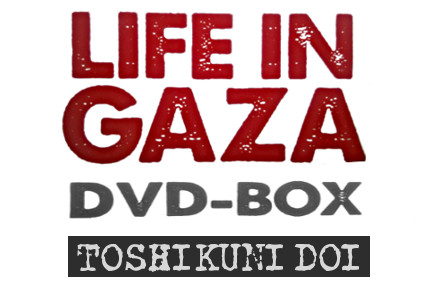Israel’s blockade and bombardments have left Gaza in crisis. Residents' hopes, rallied by the 1993 Peace Accords (Oslo Accords) which conjured the dream of Gaza as the «Hong Kong of the Middle East,» have been shattered. How did the present situation in Gaza come about? The commentary of Raji Sourani, a human rights advocate working on behalf of Palestine, guides this visual history of Gaza, retracing events from the First Intifada in 1986 through the 2008-2009 bombings.
"Life in Gaza"
pentalogy (5disk)
- Part 1: Raji Sourani’s Path(52min)
- Part 2: Two Intifadas(82min)
- Part 3: Rise of Hamas(67min)
- Part 4: Blockade(84min)
- Part 5: Assault on Gaza(86min)
Director and Camera: Toshikuni Doi
2015 / Japan
Audio: Arabic, English
Subtitles: English, Japanease
Part 1: Raji Sourani's Path

Born into a distinguished Gaza family, Raji Sourani experienced the occupation firsthand, seeing the harsh conditions people have to endure. This exposure propelled him into politics in a struggle against the occupation. For that, the Israeli authorities put him in prison where he was forced to live behind bars for nearly five years. Half of Raji's life has been spent as an attorney defending human rights under the occupation. Through his story the lives and thoughts of the people living in Gaza are conveyed.
Part 2: Two Intifadas

The First Intifada transformed Palestinian society when people's anger at the occupation exploded. Later, the resentment and disappointment of residents manifested itself once again in an uprising to shake off Israeli control after it became clear that conclusion of the Oslo Accords in effect legitimized the occupation. In Part 2, Gaza's leaders sum up the historical merits and demerits of Yasser Arafat, the man who spearheaded that process.
Part 3: Rise of Hamas

Exploring the background behind Israel's withdrawal from Gaza in the summer of 2005 leads one to zero in on the reality of the Islamic Resistance Movement Hamas, which took advantage of such conditions to expand its base of support. Part 3 depicts the context within which Hamas has expanded its power until effective control was established over Gaza and follows its shadow of influence, presenting the organization's two faces: one as a charity institution supporting a people living in dire need under the occupation and the second as a militant organization resisting the occupation with force.
Part 4: Blockade

Israel has strengthened its “blockade” of Gaza as a means of “collectively punishing” Hamas for expanding its influence and the populace for its support of the resistance movement. Residents suffer due to shortages of food, medicine and other necessities. They have been deprived of opportunities for work and medical treatment in other countries because of restrictions on their movement. Within Gaza's ruined economy, young people are jobless and many have lost all hope for a better future.
Part 5: Assault on Gaza

Israel's attack on Gaza (December 2008~January 2009) produced roughly 1400 casualties, of which 70% were civilians. Damage was not confined to human life and dwellings, but factories, agricultural land and other industrial infrastructure were also destroyed. The reality of that damage is reported in detail based on the testimony of surviving family members and others involved. Knowledgeable commentators and other experts discuss the backdrop of support in Israel bolstered by an overwhelming majority of its citizens.



